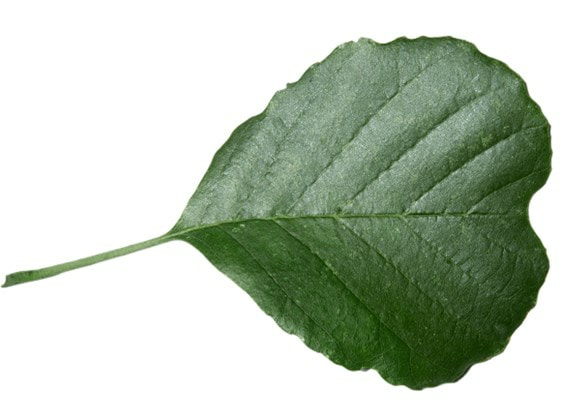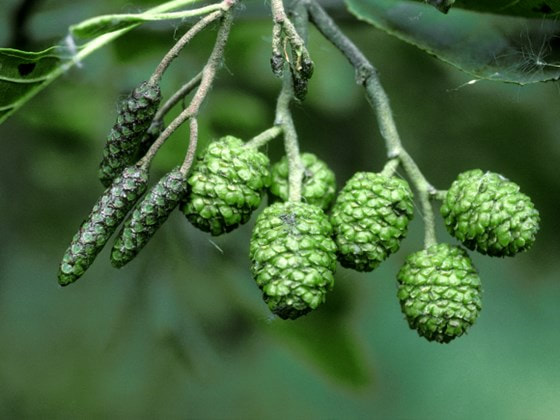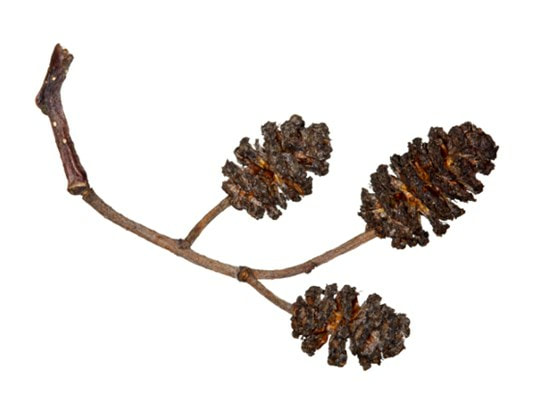|
Julie is doing the B-Log this week. Be kind to her. I'm quite fascinated by the Tree Zodiac as an alternative to the astrological zodiac. It's intriguing why Celtic people chose certain months for certain trees. Alder 'The Trailblazer' is the tree for March 18-April 14. We have lots and lots of alder in the area we have coppiced this winter, so I thought we could explore some facts and folklore for our native Alnus glutinosa. Alder loves wet areas and riverbanks and is one of our most common trees in England. It has a special relationship with one bacteria species (Bacterium franks). The bacteria fixes nitrogen from the air into nitrogen in the tree's root nodules which feed the tree and fertilise the soil, and in exchange the bacteria get sugars from the tree's photosynthesis. Alder trees have male and female flowers on the same tree, which you see February to April (perhaps why this month is alder's month??) These flowers are a valuable early source of nectar and pollen for insects and seeds in the small pretty cones are loved by birds. When alder is cut there is a remarkable change in colour of the wood in the minutes afterwards as the wood turns dark orange before your very eyes. Celts used 'bleeding' alder to make shields, which would protect warriors from injury (and bleeding presumably), potentially encouraging folklore of alder being protective, inspiring followership and confidence. Alder charcoal was also a key ingredient for gunpowder, a later connection with war.
Alder's 'trailblazer' and pathfinder titles may be associated with alder's ability to last when submerged in water, despite being one of our softer hardwoods. We make crayons with it and you can sharpen them with a kitchen knife, but surprisingly archaeologists have found ancient submerged pathways and foundations for crannogs made of alder. Alder charcoal also fuelled iron smelting in the 'trailblazing' industrial revolution, until demand exceeded supply and it was eventually replaced by coke. Alder from our ancient woodland may well have been used at this time in the nearby (long gone) furnaces near Ironbridge. We will be carrying on this tradition of charcoal making when we use our new charcoal ring kiln next month - we'll keep you posted. One area we aren't planning on developing is clog making. Alder is great for clog soles - it's light and tolerates the wet. Even so, we will stick with our waterproof boots and wellies in this year's coppice - it's wet and boggy - just how alder likes it!
2 Comments
Sue Buckley
24/3/2019 08:42:41 pm
Your blogs are alway so informative, I really look forward to reading them, great write up Julia xx
Reply
Corrinne
24/3/2019 08:47:44 pm
Beautifull written Julie. You get extra points for getting the word 'crannogs' in there too. Had to look them up!!!
Reply
Leave a Reply. |
mIKE TAYLORGreen woodworker & woodland craftsman. Archives
March 2022
Categories |



 RSS Feed
RSS Feed